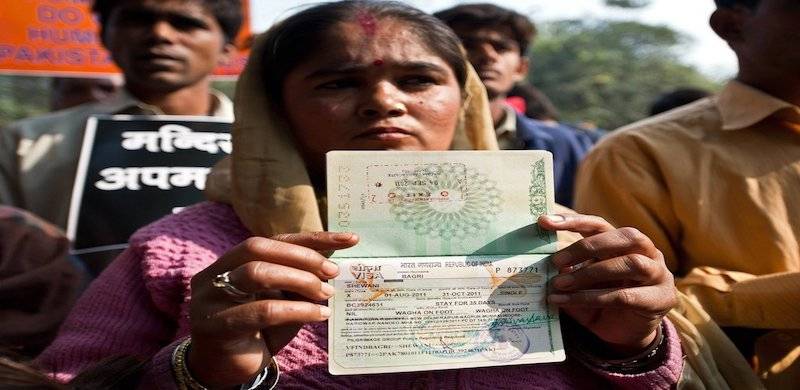
Planning an overseas trip is fairly straightforward; an aspirant applies for the visa, books a ticket, makes travel arrangements and is ready to take off. But in the case of Pakistan and India, it’s not as simple as it looks.
The two nuclear neighbours, whose history have been marred with disputes and trust deficit, are at odds even today. Mutual engagements are almost at a standstill, bilateral trade is unbalanced as well as underperforming, and people to people contacts have become only a talk of the past. Existing visa restrictions such as lengthy and exhausting visa process, redundant supporting documentations and prolonged wait further complicates the matter.
Visa restrictions have not only barred both sides from abridging multilayered differences but has also sharpened the stark difference in strength of passports of both the sides. India ranks 85th whereas Pakistan’s has the fourth worst passport in the world, giving one side an upper hand while the other suffers.
Separated by religion and ideology, Pakistan and India have lots of commonalities despite 70 years of separation while the cultural similarities sit on top. Before partition in 1947, Muslims and Hindus, the two dominant ethnicities in the Subcontinent, lived, ate and celebrated together. Even religious festivals like Eid and Holi used to be mutually celebrated. After demarcation of the borders, the two ethnicities became frigid yet continued celebrations on old traditions but on their respective sides. Urdu language, music, food and cricket are some of the other examples that keep the two sides connected with shared similarities despite different borders and different scenarios. Even today, Bollywood, the gigantic Indian film industry, remains popular in Pakistan and Pakistani TV dramas are equally famous in India.
Despite these cultural commonalities, millions of people await ease in visa restrictions. But it’s not that the two sides never brought the issue on the table. In the past two decades, easing the visa regime has been discussed almost at every high level meeting. In 2004, India eased visa norms for several categories of Pakistani nationals. Pakistan, in its response also drastically revised and eased its visa policy for Indian tourists, especially businessmen and pilgrims in 2006.
Resultantly, several delegates of civil society and actors visited each other. In 2012 both Pakistan and India made another effort and agreed to ease the visa regime for bilateral visits. All through these years, the two countries witnessed enhanced bilateral visits not only by the high profile officials but doctors, journalists and actors visited each side more frequently than ever before. That frenzy seems to be over though. Even actors, who are often dubbed borderless creatures, are denied visas both by Islamabad and New Delhi. And the initiatives like Aman Ki Asha and Pakistan India People’s Forum for Peace and Democracy have also lost charm.
Series of events that made peace elusive helped bring tough visa restrictions by both sides. Just as the 2001 attack on Indian parliament brought both sides on the verge of war and visa process was halted, the Mumbai attacks in 2008 and Pulwama attack in 2019 added miseries and resulted in suspension of visa process.
When Imran Khan became Prime Minister in 2018, he underlined key areas of his rule including peace with India and boosting tourism. Towards that end, Pakistan started work on Kartarpur Corridor, a sacred place for Sikh religion in Pakistan's Punjab province, and formally inaugurated the 4km corridor in November 2019. Touting it a means for peace, Pakistan allowed visa free entry of Sikh pilgrims and hoped for a better response from India, too. Recently, Pakistan relaxed travel restrictions by offering visas on arrival to citizens of 50 courtiers electronic visas to visitors from 175 countries but the neighbor India was not in both the lists. Likewise, India had also introduced Tourist Visa on Arrival scheme for the nationals of eleven countries in 2011 but didn’t include Pakistan. These steps to promote tourism can help both countries appeal to international tourists but are not ways to improve bilateral relations or people to people contacts.
The South Asian region has long been hijacked with the Indo-Pak rivalry putting lives of millions of people at stake. The region has a tremendous potential to turn itself into a center piece for global companies and businesses. But the dream of regional integration requires a broad vision and generous policymaking. If the two hostile nations can renew 2003 ceasefire arrangements in times when bilateral engagements are almost non-existent, then there is also greater prospects for easing the visa regime.
Frequent cross border travelling could help both sides reduce tension and easing visa restrictions can be a stepping stone towards lasting peace.
